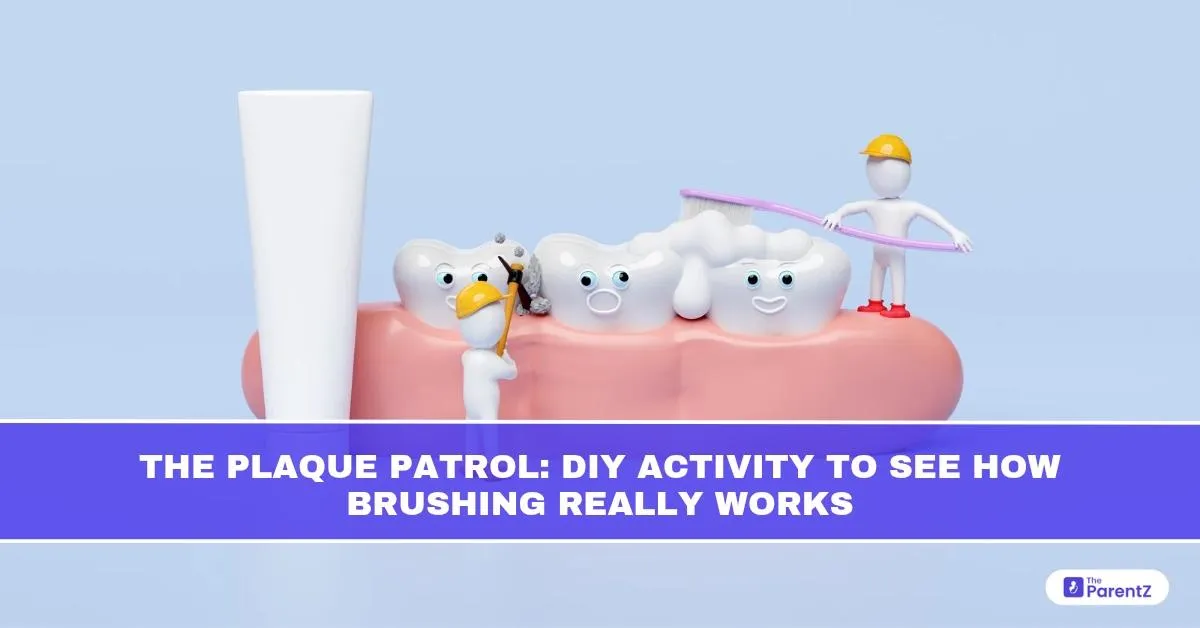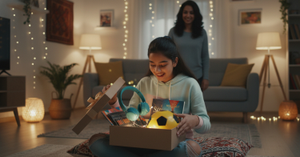“Teaching kids to care for their teeth is really teaching them to care for themselves, one small act at a time.”
Toothbrushing is such a daily routine that it often becomes automatic—wake up, brush, rinse, done. But for kids, the why behind brushing is just as important as the how. What exactly are we brushing away? And what happens if we don’t?
Enter the Plaque Patrol, a simple, DIY activity that brings the world of dental hygiene to life. With everyday items and a little imagination, you and your child can explore how brushing really works, what plaque is, and why taking care of our teeth goes far beyond just fresh breath.
This isn’t just an experiment; it’s a small moment of discovery that connects learning with self-care, transforming a chore into a habit born of understanding and love.
What is the Plaque Patrol DIY?
The Plaque Patrol is a playful activity that shows kids what happens when we don’t brush, and how brushing makes a real, visible difference. Using items like apples, crackers, or hard-boiled eggs along with a mixture of food coloring and “plaque mix” (think peanut butter or yogurt), you simulate how plaque sticks to surfaces just like it does on our teeth. Then, you give your child a toothbrush and let them clean it off.
As they scrub, they see the effect of brushing. Bits of sticky “plaque” come off, color fades, and clean surfaces shine through. It’s an instant, hands-on lesson: brushing isn’t just something adults make them do, it actually works.
Why This Activity Matters:
Young children are natural scientists. They want to see, touch, and test the world around them. Simply telling them, “Plaque causes cavities” doesn’t always stick. But when they see a sticky substance cling to a surface, refusing to budge without effort, they understand in a way that words alone can’t convey.
It’s a wonderful moment of clarity: brushing is not just about following rules. It’s about removing something harmful, something invisible but very real. And with that realization comes a deeper motivation.
The child who once resisted brushing might now say, “I need to get the plaque off!” That’s a victory not just for dental health, but for confidence, independence, and lifelong self-care
The Science Behind the Smile
So, what is plaque exactly?
Plaque is a soft, colorless film made up of bacteria, food particles, and saliva. It forms on our teeth every day, especially after eating. If it’s not removed by brushing and flossing, it hardens into tartar, which is much tougher to clean and can lead to cavities and gum disease.
These bacteria love sugar. When they digest sugary foods, they produce acid that attacks the enamel, the hard outer layer of our teeth. Over time, this can lead to tiny holes (cavities), sensitivity, and even tooth loss if left untreated.
By helping your child understand this, you’re giving them a sense of agency: your toothbrush is your tool to fight back, like a superhero in the fight for a healthy smile.
How to Make It Magical
The real magic of the Plaque Patrol activity is how simple materials turn into a meaningful lesson.
You could try:
- Apples or eggs coated in colored “plaque” (a mix of peanut butter and food coloring works well).
- Mini crackers or rice cakes painted with yogurt-based mixtures to simulate buildup.
- A toothbrush and a damp cloth as “cleaning tools” to scrub away the fake plaque.
You don’t need a lab or special equipment, just some time, conversation, and curiosity. As your child scrubs the “teeth,” talk about the different areas of the mouth, how food hides between teeth, why back molars are trickier, and how long we need to brush for a truly clean mouth.
It’s not about being perfect, it’s about being aware.
A Gentle Shift in Perspective
There’s something beautiful about transforming a daily task into a mindful practice. Brushing isn’t just a countdown to bedtime or a race in the morning; it’s a moment of connection with the body. A time to care. A ritual of respect for oneself.
The Plaque Patrol doesn’t just clean “dirty” eggs or crackers. It cleans our understanding, washing away confusion, boredom, or resistance, and replacing it with clarity and curiosity.
And perhaps, after the activity, you’ll find your child lingering a little longer with the toothbrush. Maybe they’ll ask if they got all the “plaque” off. Maybe they’ll grin proudly in the mirror.
Those small changes? They matter. A lot.
A Note of Encouragement
Every child has their own journey with learning and care. Some will love this activity right away; others may be more hesitant. But even in those tiny, messy, playful moments, scrubbing an apple, giggling at peanut butter on their fingers, they’re taking in something powerful: My health is in my hands.
And that’s the real heart of this activity. It’s not just about clean teeth. It’s about confidence. About giving children tools they understand, and habits they want to practice. About helping them take responsibility, not out of fear or force, but out of knowing why it matters.
A Final Thought
The Plaque Patrol is a fun, simple, and deeply meaningful way to teach dental hygiene. It’s not just about the mess or the experiment; it’s about giving your child the chance to see the results of their actions and feel proud of the care they can give themselves.
So grab some peanut butter, pull out a toothbrush, and get ready to explore the unseen world of teeth with your little one.
Because every small act of brushing is really an act of love for their body, their smile, and their growing independence.








Be the first one to comment on this story.